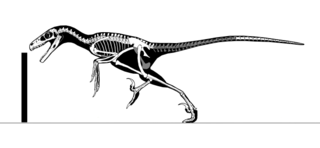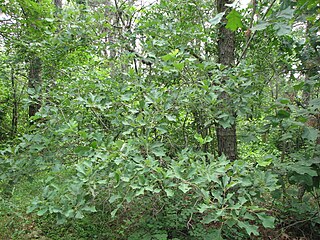
The horned lark or shore lark is a species of lark in the family Alaudidae found across the northern hemisphere. It is known as "horned lark" in North America and "shore lark" in Europe.

Baird's sparrow is a species of North American birds in the family Passerellidae of order Passeriformes. It is a migratory bird native to the United States, Canada, and Mexico.

Helianthus is a genus comprising about 70 species of annual and perennial flowering plants in the daisy family Asteraceae commonly known as sunflowers. Except for three South American species, the species of Helianthus are native to North America and Central America. The best-known species is the common sunflower. This and other species, notably Jerusalem artichoke, are cultivated in temperate regions and some tropical regions, as food crops for humans, cattle, and poultry, and as ornamental plants. The species H. annuus typically grows during the summer and into early fall, with the peak growth season being mid-summer.

Saurornitholestes is a genus of carnivorous dromaeosaurid theropod dinosaur from the late Cretaceous of Canada (Alberta) and the United States.

Storeria is a genus of snakes in the subfamily Natricinae of the family Colubridae. The genus is endemic to North America and Central America. The genus consists of five species, four of which are known as brown snakes, and one of which is known as the redbelly snake.

Quercus ilicifolia, commonly known as bear oak or scrub oak, is a small shrubby oak native to the Eastern United States and, less commonly, in southeastern Canada. Its range in the United States extends from Maine to North Carolina, with reports of a few populations north of the international frontier in Ontario. The name ilicifolia means "holly-leaved."

Dolichoderus is a genus of ants found worldwide.

Dolichoderus mariae is a species of ant in the subfamily Dolichoderinae and is found in North America.

The gray hawk or Mexican goshawk is a smallish raptor found in open country and forest edges. It is sometimes placed in the genus Asturina as Asturina plagiata. The species was split by the American Ornithological Society (AOU) from the gray-lined hawk. The gray hawk is found from Costa Rica north into the southwestern United States.

Liparis liliifolia, known as the brown widelip orchid, lily-leaved twayblade, large twayblade, and mauve sleekwort, is a species of orchid native to eastern Canada and the eastern United States. It can be found in a variety of habitats, such as forests, shrublands, thickets, woodlands, and mountains. The orchid is considered globally secure, but it is considered rare or endangered in many northeastern states.

Dolichoderus balticus is an extinct species of Eocene ant in the genus Dolichoderus. Described by Mayr in 1868, the fossils of a worker, queen and male of the species were discovered in the Baltic Amber.
Dolichoderus coniger is a species of ant in the genus Dolichoderus. Described by Mayr in 1870, the species is endemic to Borneo.
Dolichoderus laminatus is a species of ant in the genus Dolichoderus. Described by Mayr in 1870, the species is endemic to many North and South American countries.
Dolichoderus patens is a species of ant in the genus Dolichoderus. Described by Mayr in 1870, the species is endemic to Borneo.

Dolichoderus sulcaticeps is a species of ant in the genus Dolichoderus. Described by Mayr in 1870, the species is endemic to Borneo, Indonesia, Malaysia, Thailand and Vietnam.

Dolichoderus taschenbergi is a species of ant in the genus Dolichoderus. Described by Mayr in 1866, the species is endemic to Canada and the United States.

Novomessor albisetosus, also known as the desert harvester ant, is a species of ant found in the United States and Mexico. A member of the genus Novomessor in the subfamily Myrmicinae, it was first described by Austrian entomologist Gustav Mayr in 1886. It was originally placed in the genus Aphaenogaster, but a recent phylogenetic study concluded that it is genetically distinct and should be separated. It is a medium-sized species, measuring 6 to 8.5 millimeters and has a ferruginous body color. It can be distinguished from other Novomessor species by its shorter head and subparallel eyes.

Metorchis conjunctus, common name Canadian liver fluke, is a species of trematode parasite in the family Opisthorchiidae. It can infect mammals that eat raw fish in North America. The first intermediate host is a freshwater snail and the second is a freshwater fish.

Quedius is a genus of large rove beetles in the family Staphylinidae. There are about 800 described species in Quedius.
















